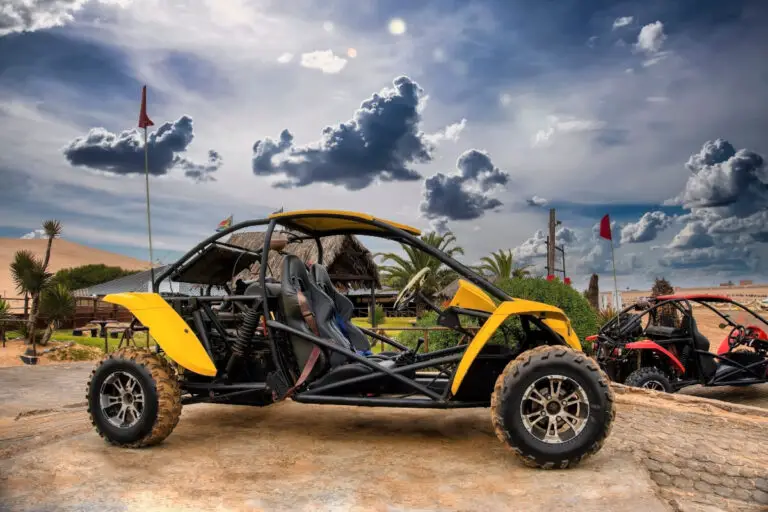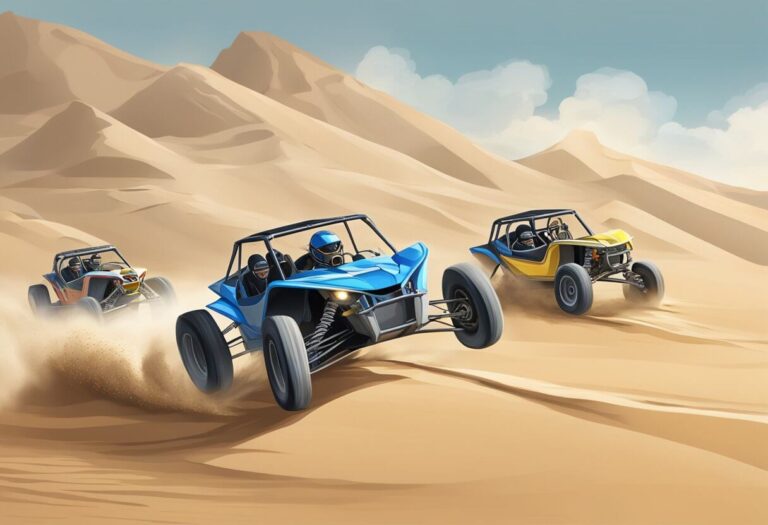Electric Sand Rail Dune Buggy: Ultimate Off-Road Experience
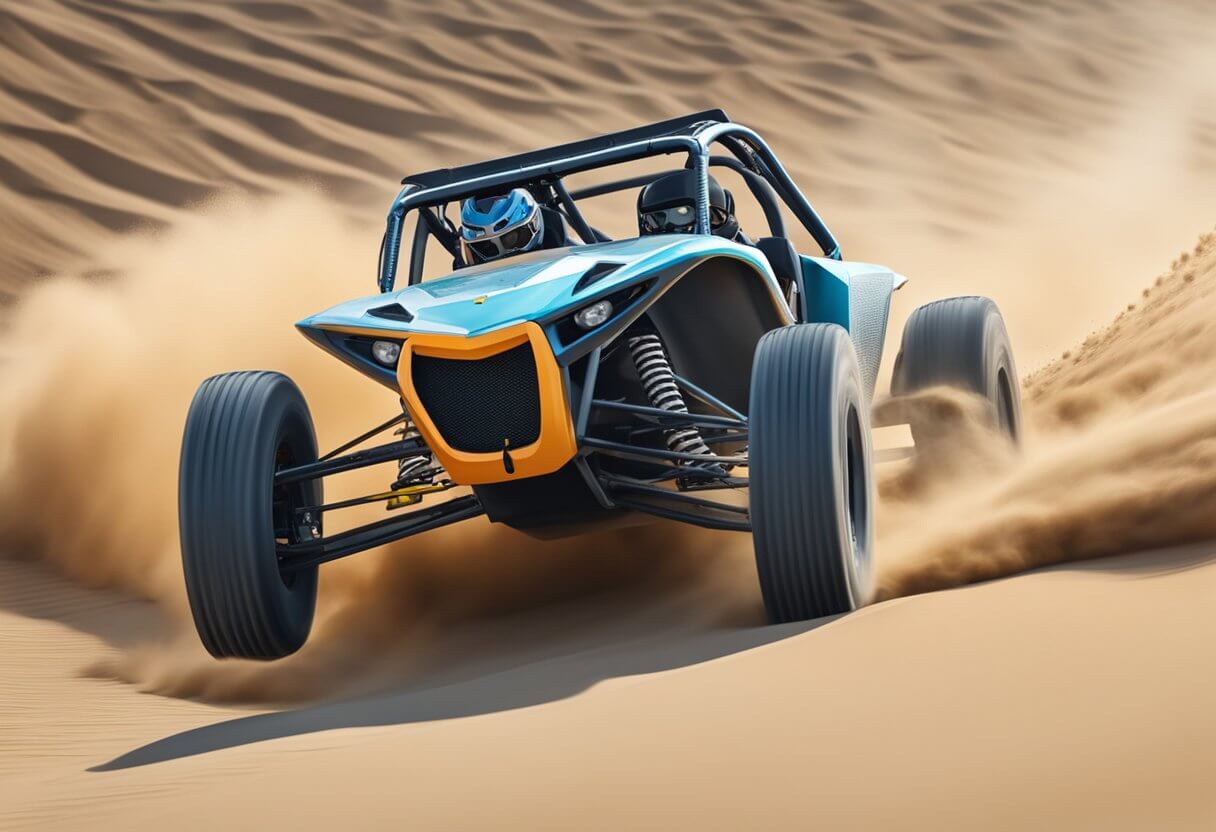
Electric sand rail dune buggies are gaining popularity as a fun and eco-friendly way to explore off-road terrain. These vehicles are designed for speed, agility, and durability, with powerful electric motors that provide instant torque and impressive acceleration. They are also environmentally friendly, producing zero emissions and reducing noise pollution compared to traditional gas-powered vehicles.
The history of electric sand rail dune buggies dates back to the 1960s, when the first dune buggies were built using modified Volkswagen Beetle chassis. Over the years, the design and engineering of these vehicles has evolved, with the introduction of electric motors and advanced battery technology. Today, electric sand rail dune buggies are known for their high performance, with top speeds of up to 100+ mph and impressive range on a single charge.
As the demand for eco-friendly and high-performance vehicles continues to grow, electric sand rail dune buggies are becoming more popular among off-road enthusiasts. These vehicles offer a unique combination of speed, power, and sustainability, making them an attractive option for those who want to explore the great outdoors without harming the environment.
Key Takeaways
- Electric sand rail dune buggies are eco-friendly and produce zero emissions, making them a sustainable option for off-road enthusiasts.
- These vehicles have a rich history dating back to the 1960s, with the design and engineering evolving over time to incorporate advanced electric motor technology.
- With impressive performance specifications and a growing market trend towards eco-friendly vehicles, electric sand rail dune buggies are becoming increasingly popular among off-road enthusiasts.
History of Electric Sand Rail Dune Buggies
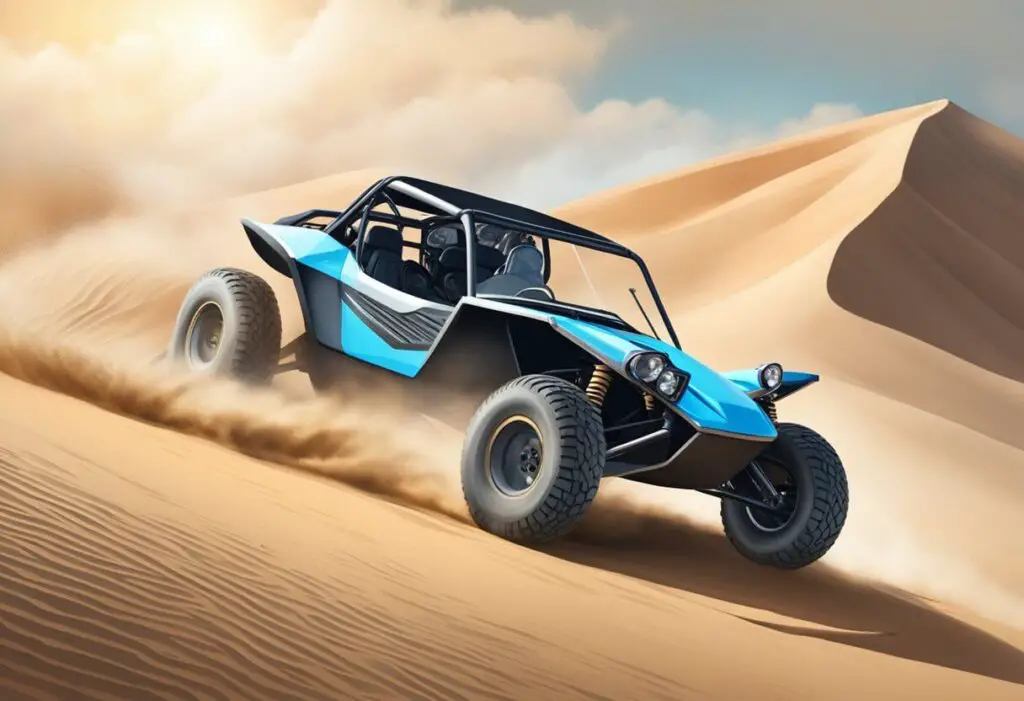
Electric sand rail dune buggies are a relatively new innovation in the world of off-road vehicles. While dune buggies themselves have been around since the 1960s, electric versions have only recently started to gain popularity.
The first electric sand rail dune buggy was likely built in the early 2000s, when electric vehicle technology was still in its infancy. These early models were often homemade and used lead-acid batteries, which were heavy and had limited range.
As electric vehicle technology improved, so did the capabilities of electric sand rail dune buggies. Today, there are a number of companies that specialize in building electric off-road vehicles, including sand rail dune buggies.
One of the advantages of electric sand rail dune buggies is their quiet operation. Unlike traditional gas-powered dune buggies, electric models produce very little noise, making them ideal for use in sensitive environments like wildlife preserves and national parks.
Another advantage of electric sand rail dune buggies is their low maintenance requirements. Without a gas engine to maintain, owners only need to worry about keeping the batteries charged and performing routine maintenance on the vehicle’s mechanical components.
Despite these advantages, electric sand rail dune buggies are still relatively rare compared to their gas-powered counterparts. However, as electric vehicle technology continues to improve and more people become interested in off-road recreation, it’s likely that we’ll see more and more electric sand rail dune buggies on the trails in the coming years.
Design and Engineering
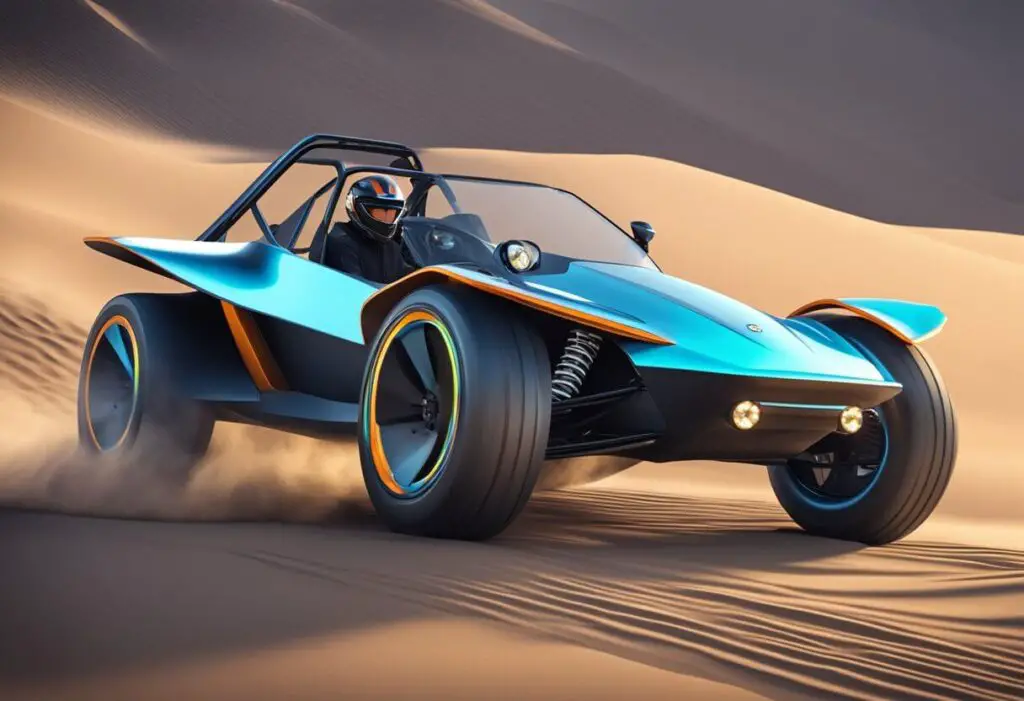
Chassis and Frame
The chassis and frame of an electric sand rail dune buggy are designed to provide complete protection to the driver. The average weight of an outdoor dune buggy is 600-800 kg. It is essential to use a strong chassis that is optimized in terms of durability, weight, and safety. The chassis is fabricated from bent tubing and welded up using appropriate welding techniques.
Electric Powertrain
The electric powertrain of an electric sand rail dune buggy consists of a lithium-ion battery and an electric motor. The battery is integrated into the buggy’s floor, while the motor is located in the rear. The motor has a circular shaft with a key, while the transmission has a spline shaft. A couple is needed, as well as an adapter plate for mounting the motor to the transmission.
Suspension Systems
The suspension system of an electric sand rail dune buggy is designed to provide maximum performance on sand dunes and beaches. The suspension system consists of independent suspension, coil-over shocks, and long travel suspension. The suspension system is designed to provide maximum ground clearance and stability.
Safety Features
The safety features of an electric sand rail dune buggy are designed to provide complete protection to the driver. The safety features include a roll cage, seat belts, and a safety harness. The roll cage is designed to provide complete protection to the driver in case of a rollover. The seat belts and safety harness are designed to keep the driver securely in place during high-speed maneuvers.
Performance Specifications
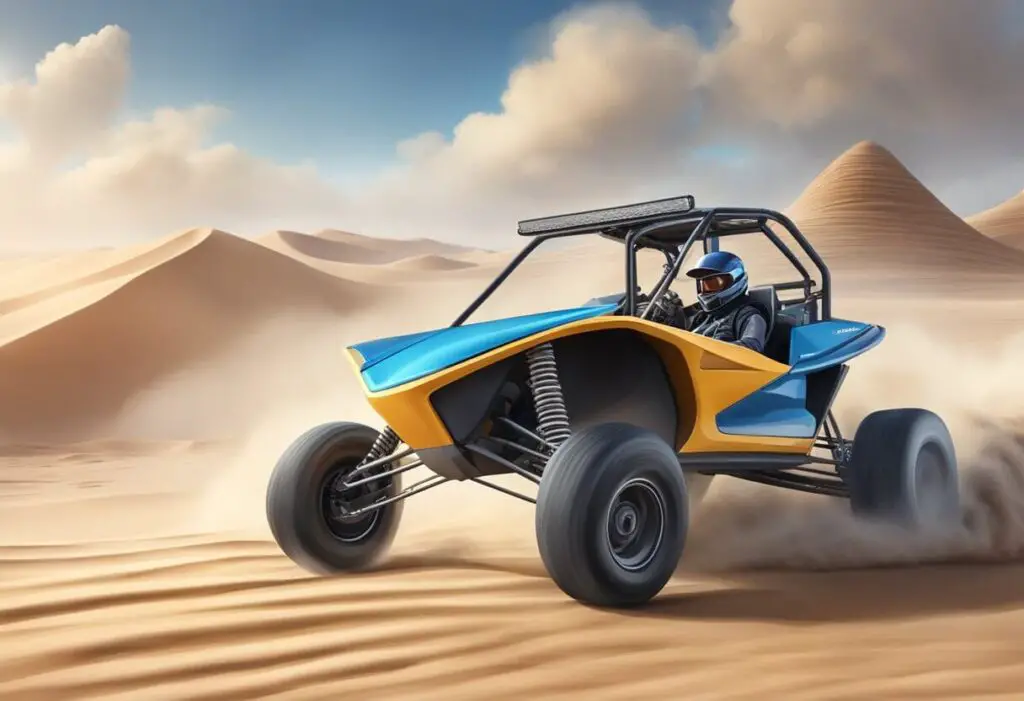
Acceleration and Speed
Electric sand rail dune buggies are known for their impressive acceleration and speed capabilities. With the electric motor’s instant torque delivery, these vehicles can go from 0 to 60 mph in just a matter of seconds, making them ideal for off-road racing and dune jumping. The Tesla-powered electric dune buggy, for instance, has a rated peak power capacity of 475 kW (636 HP), which makes it one of the most powerful electric dune vehicles out there. This impressive power output allows it to reach a top speed of around 200 mph.
Torque and Power Output
Electric sand rail dune buggies are powered by electric motors that produce high amounts of torque and power output. The BugJuiced sand rail, for instance, features a 96-volt motor that can produce a power output of up to 100 HP. This power-to-weight ratio can make a vehicle like this keep up with the other vehicles in the dunes. The Meyers Manx 2.0 Electric, on the other hand, features a two electric motor that can produce a torque of up to 240 lb-ft.
Battery Range and Efficiency
The battery range and efficiency of electric sand rail dune buggies have improved significantly in recent years. The Meyers Manx 2.0 Electric, for instance, estimates that the buggy will go 150 miles with the small battery and 300 miles with the big battery. A Level 2 (6 kW) onboard charger is standard and DC Fast. The BugJuiced sand rail, on the other hand, has a range of 90 to 100 miles, making it ideal for short off-road trips. The Tesla-powered electric dune buggy has a battery range of around 200 miles, which is impressive considering its high power output.
Overall, the battery range and efficiency of electric sand rail dune buggies have improved significantly in recent years, making them a viable option for off-road enthusiasts who want to reduce their carbon footprint.
Environmental Impact
Electric sand rail dune buggies have several advantages over traditional gasoline-powered vehicles when it comes to environmental impact. Here are a few key points to consider:
- Zero Emissions: Electric sand rail dune buggies produce zero emissions, which means they do not contribute to air pollution or greenhouse gas emissions. This is because they are powered by electricity, which is generated from renewable energy sources like solar, wind, and hydro power. By driving an electric sand rail dune buggy, individuals can reduce their carbon footprint and help combat climate change.
- Reduced Noise Pollution: Electric sand rail dune buggies are much quieter than their gasoline-powered counterparts. This is because they do not have an internal combustion engine, which is the primary source of noise pollution in traditional vehicles. By reducing noise pollution, electric sand rail dune buggies can help preserve natural habitats and reduce the impact of human activity on wildlife.
- Reduced Land Impact: Electric sand rail dune buggies are often lighter and more compact than traditional vehicles, which means they can have a smaller impact on the land. This is especially important in sensitive areas like beaches, dunes, and other natural habitats. By choosing an electric sand rail dune buggy, individuals can help reduce the impact of off-road vehicles on the environment.
All in all, electric sand rail dune buggies offer a more sustainable and environmentally-friendly alternative to traditional gasoline-powered vehicles. By choosing an electric sand rail dune buggy, individuals can reduce their impact on the environment and enjoy the thrill of off-road driving without compromising the natural beauty of the world around them.
Market Trends and Popularity
Electric sand rail dune buggies are becoming increasingly popular as people seek environmentally friendly alternatives to traditional gas-powered vehicles. With advancements in technology, electric dune buggies are now capable of providing impressive power and range.
One of the biggest advantages of electric sand rail dune buggies is their low maintenance requirements. With fewer moving parts and no need for oil changes, electric dune buggies are much easier to maintain than their gas-powered counterparts. They also produce zero emissions, making them a great choice for off-road enthusiasts who care about the environment.
In recent years, several companies have started producing electric sand rail dune buggies, including Tesla, Volkswagen, and Meyers Manx. These vehicles feature powerful electric motors and advanced battery technology, allowing them to tackle even the toughest terrain.
As the popularity of electric vehicles continues to grow, it’s likely that we’ll see even more electric sand rail dune buggies hit the market in the coming years. With their impressive performance and eco-friendly design, these vehicles are sure to appeal to a wide range of off-road enthusiasts.
Customization and Modifications
Sand rail dune buggies have always been a popular choice for off-road enthusiasts. With the rise of electric vehicles, electric sand rail dune buggies have become increasingly popular. These vehicles offer the same thrill and excitement of traditional sand rails but with the added benefit of being environmentally friendly.
Aftermarket Parts
One of the biggest advantages of electric sand rail dune buggies is the availability of aftermarket parts. These parts can be used to customize and modify the vehicle to suit the driver’s preferences. Some popular aftermarket parts include LED lighting, upgraded suspension systems, and custom wheels.
DIY Upgrades
For those who prefer to take a hands-on approach to customization, there are many DIY upgrades available. These upgrades can range from simple modifications such as adding a roll cage to more complex upgrades such as installing a new motor. With the right tools and knowledge, it is possible to transform a stock electric sand rail dune buggy into a customized off-road machine.
Performance Tuning
Performance tuning is another area where electric sand rail dune buggies excel. With the use of advanced motor controllers and battery management systems, it is possible to fine-tune the performance of the vehicle to achieve maximum power and efficiency. Some popular performance upgrades include upgraded motors, high-capacity batteries, and regenerative braking systems.
Legal Regulations and Safety Standards
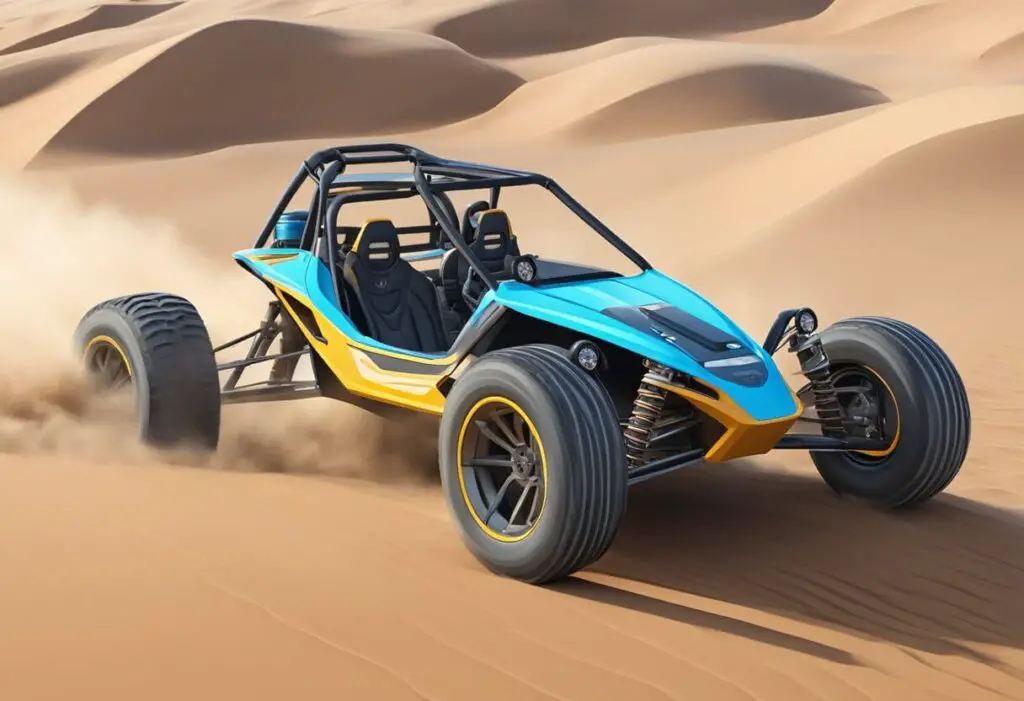
When it comes to electric sand rail dune buggies, there are specific legal regulations and safety standards that must be met to ensure that they are street legal and safe to drive. These regulations vary by state and country, so it’s important to research the specific requirements for your area.
One of the main requirements for street legal electric sand rail dune buggies is that they must have the necessary safety equipment, such as seat belts, headlights, turn signals, and brake lights. In addition, they must meet emissions standards and have a valid registration and license plate.
It’s important to note that even if an electric sand rail dune buggy meets all of these requirements, it may still face restrictions on certain roads or areas. For example, some states may prohibit off-road vehicles from being driven on public roads, or may have specific restrictions on where they can be driven.
To ensure that an electric sand rail dune buggy is safe to drive, it’s important to regularly inspect and maintain it. This includes checking the brakes, tires, and suspension, as well as making sure that all of the safety equipment is in good working condition.
Overall, while there are specific legal regulations and safety standards that must be met for electric sand rail dune buggies to be street legal and safe to drive, with proper research and maintenance, they can provide an exciting and unique off-road experience.
Buying Guide
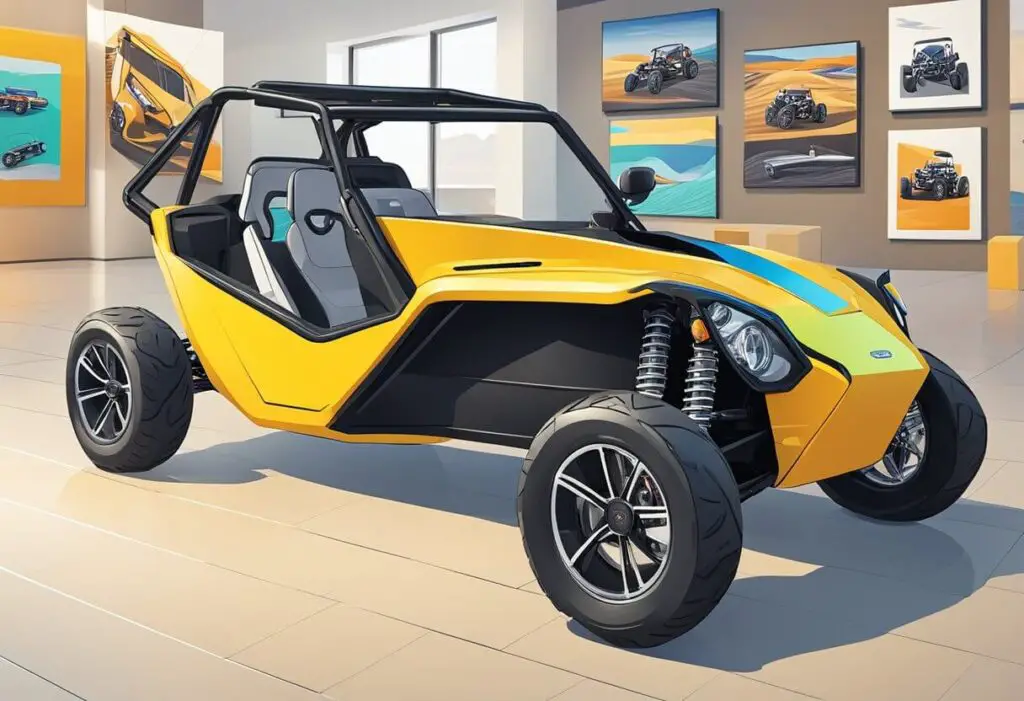
When it comes to buying an electric sand rail dune buggy, there are a few important factors to consider in order to choose the best product for your needs. Here are some key things to keep in mind:
New vs. Used
One of the first decisions to make is whether to buy a new or used electric sand rail dune buggy. A new buggy will likely come with a warranty and be in pristine condition, but will also be more expensive. On the other hand, a used buggy can be a more affordable option, but may have wear and tear that could affect its performance.
Price Comparison
Price is always an important factor to consider when making a purchase. Electric sand rail dune buggies can vary greatly in price, with some models costing several thousand dollars more than others. It’s important to compare prices and features to find the best value for your budget.
Warranty and Support
When buying an electric sand rail dune buggy, it’s important to consider the warranty and support offered by the manufacturer. A good warranty can provide peace of mind and protect your investment, while good customer support can help you troubleshoot any issues that may arise.
To help you compare different models, here is a table summarizing the key features to look for when buying an electric sand rail dune buggy:
| Feature | Description |
|---|---|
| Battery Life | Look for a buggy with a battery that can provide enough power for your needs. |
| Motor Power | A more powerful motor can provide better performance, but may also drain the battery more quickly. |
| Suspension | A good suspension system can help absorb shock and provide a smoother ride. |
| Tires | Look for tires that are designed for off-road use, with good traction on sand and other loose surfaces. |
| Weight Capacity | Make sure the buggy can support the weight of all passengers and any gear you plan to bring. |
By considering these factors and doing your research, you can find the best electric sand rail dune buggy for your needs and budget.




